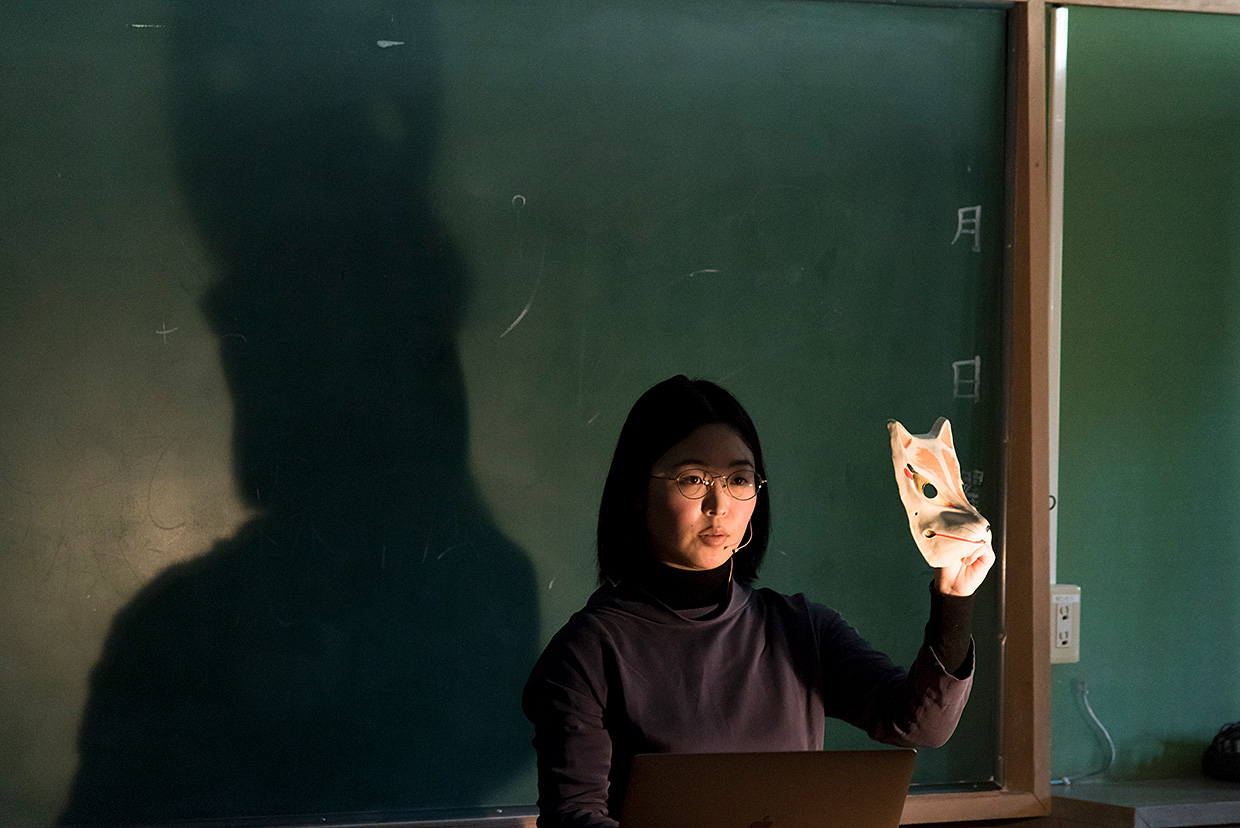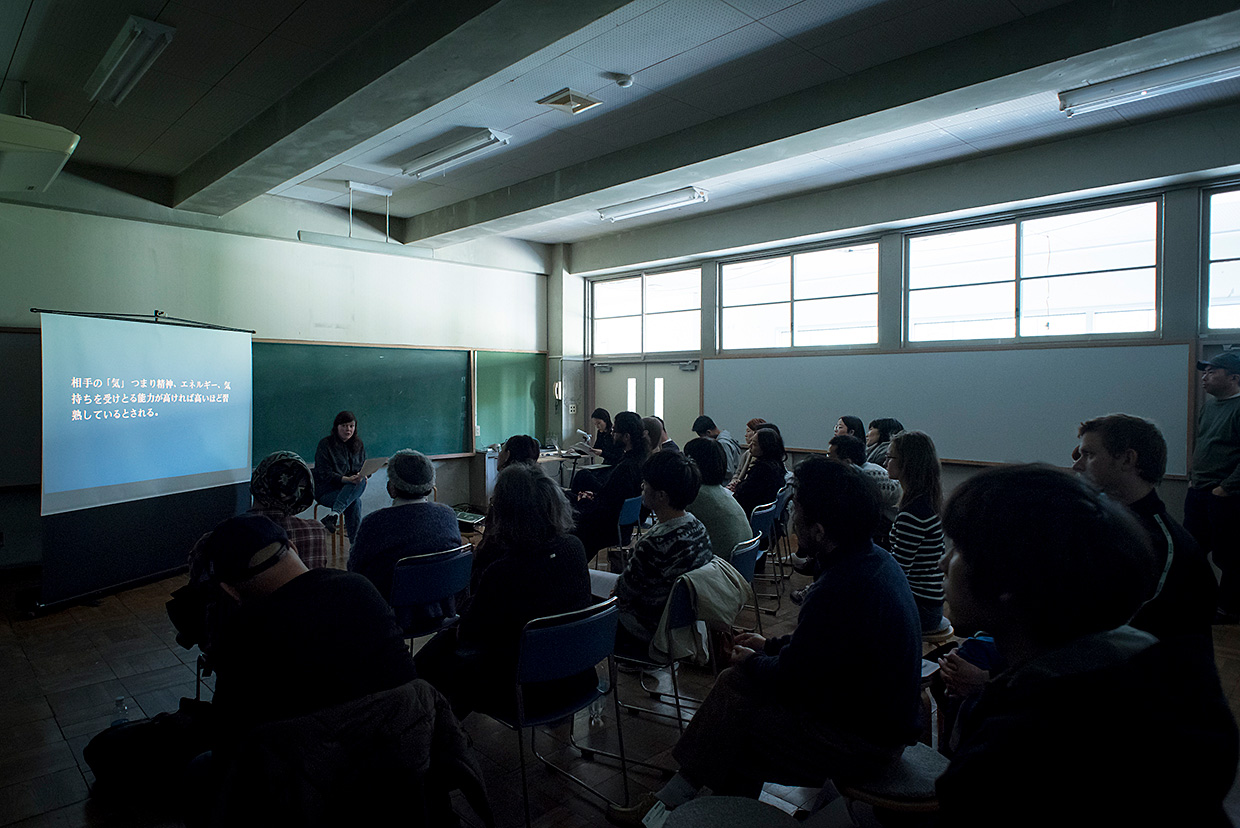Exchange Residency Program
Program for 2019
Working together with Hospitalfield, ARCUS Project sends the artist from Japan to Scotland and invited the artist from Scotland.
Program Period
- Hospitalfield:
- September 2 – 28, 2019 (27 days)
- ARCUS Project:
- February 1 – 28, 2019 (28 days)
Partner Institution – Hospitalfield (Scotland)
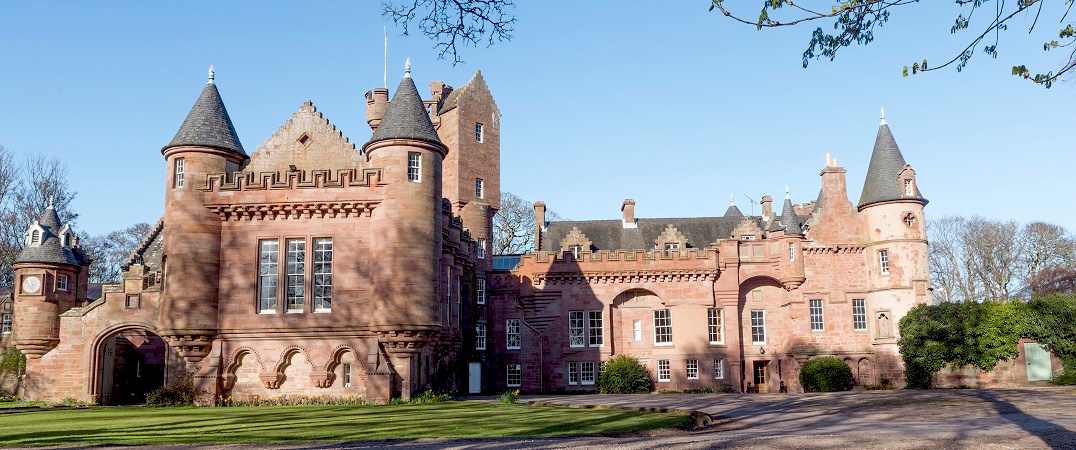
Selection
[Japan-based Artist]
Among the Japanese candidates chosen by the ARCUS Project Administration Committee, Hospitalfield and the Committee have selected the artist.
[Scotland-based Artist]
Open call
(Selectors: ARCUS Project Administration Committee, Hospitalfield, Edinburgh Sculpture Workshop, and Cove Park)
*Between 2019 and 2020 Hospitalfield, Cove Park and Edinburgh Sculpture Workshop collaborated with a number of partners in Japan (ARCUS Project, Arts Initiative Tokyo and Tokyo Arts and Space) to deliver a new residency exchange program for artists, makers/designers and curators based in Scotland and in Japan.
This program, supported by British Council Scotland and Creative Scotland, the Daiwa Anglo-Japanese Foundation and the Great Britain Sasakawa Foundation, took place over two years, marking the British Council’s UK in Japan 2019-20 Season of Culture and the 2020 Olympics in Tokyo.
Sato Tomoko
Japan
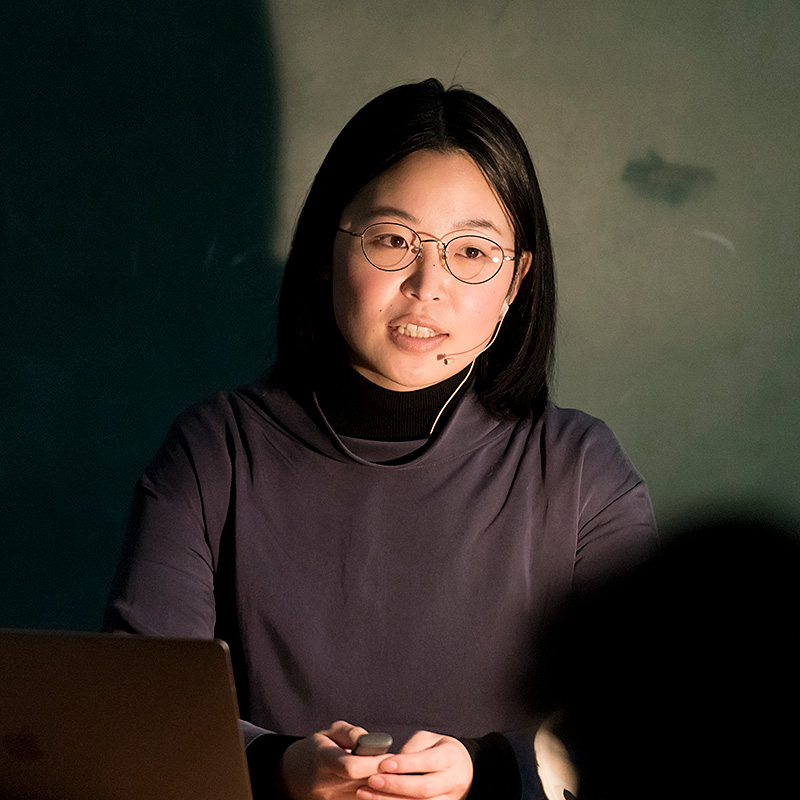
Born in Nagano in 1990. Lives and works in Kanagawa. Sato obtained her Master of Fine Arts in Film and New Media from Tokyo University of the Arts in 2018. Making use of a lecture format, Sato’s practice focuses on narratives. By linking issues that arise in the process of investigating historical facts in a multifaceted way, Sato constructs a story that interweaves fiction and documentary. Sato’s works are the product of her interest in Japan’s pursuit of a distorted form of modernization and the plurality conveyed by events that have fallen through the cracks of History with a capital H as well as her attraction to legends and ruins that survive in various places.
http://tomokosato.info
[Selected Exhibitions and Activities]
2019 The Double Tsuburaya, Performance, SHIBAURA HOUSE, Tokyo
2019 Centaurus on Route 103, Screening, Shibuya Euro Live, Tokyo
2019 Centaurus on Route 103, Exhibition, Gallery Saitou Fine Arts, Kanagawa
2018 The Debris and Tower, Performance, Asakusa Public Hall, Tokyo
2018 Shiro-Kitsune, The Hidden Song, Performance, BankART Studio NYK, Kanagawa
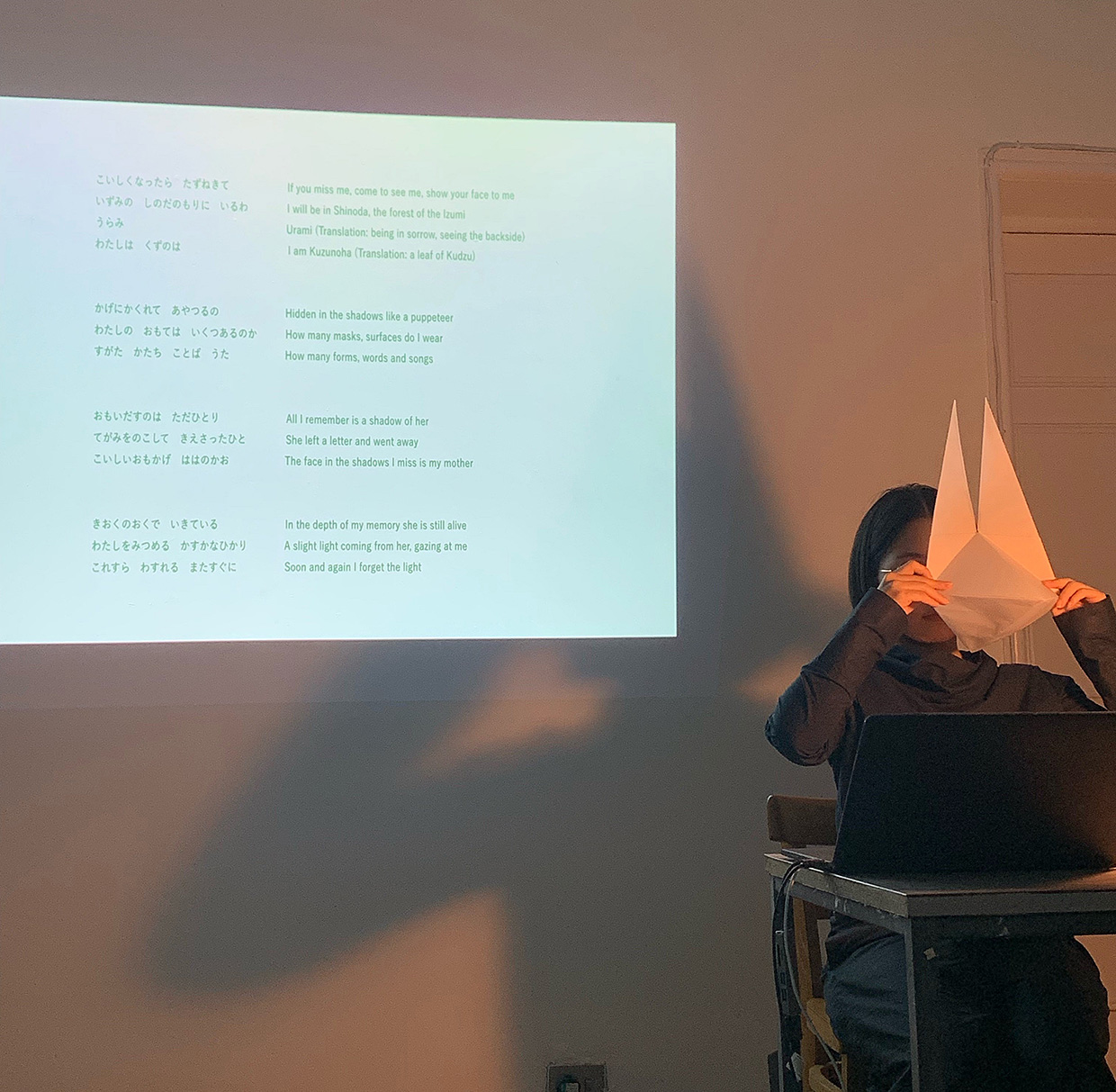
Lecture performance The Reversed Song, A Lecture on “Shiro-Kitsune (The White Fox)” at Hospitalfield
Photo: Yevgen Nikiforov
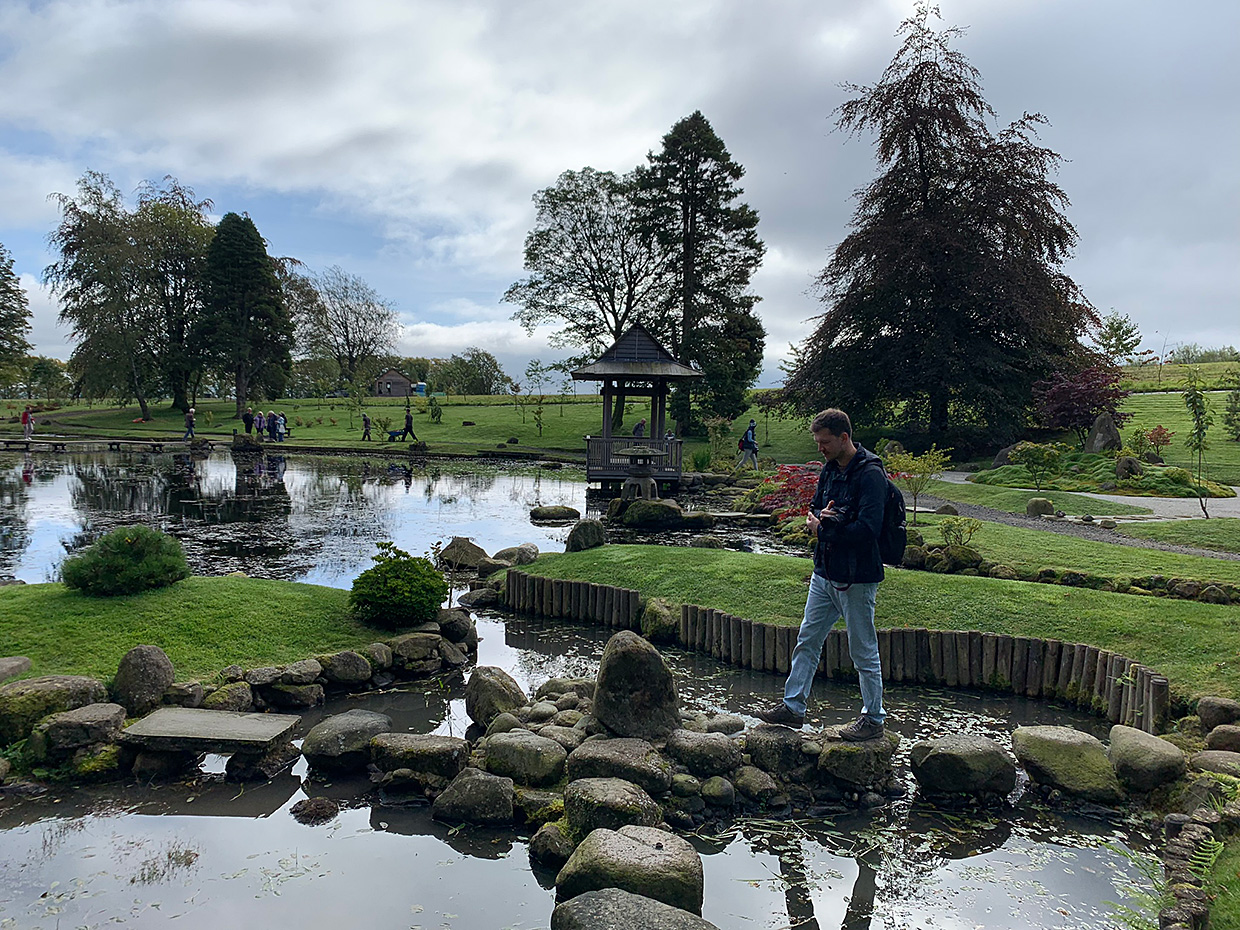
The Japanese Garden of Cowden Castle,
designed by Taki Handa in the Meiji era
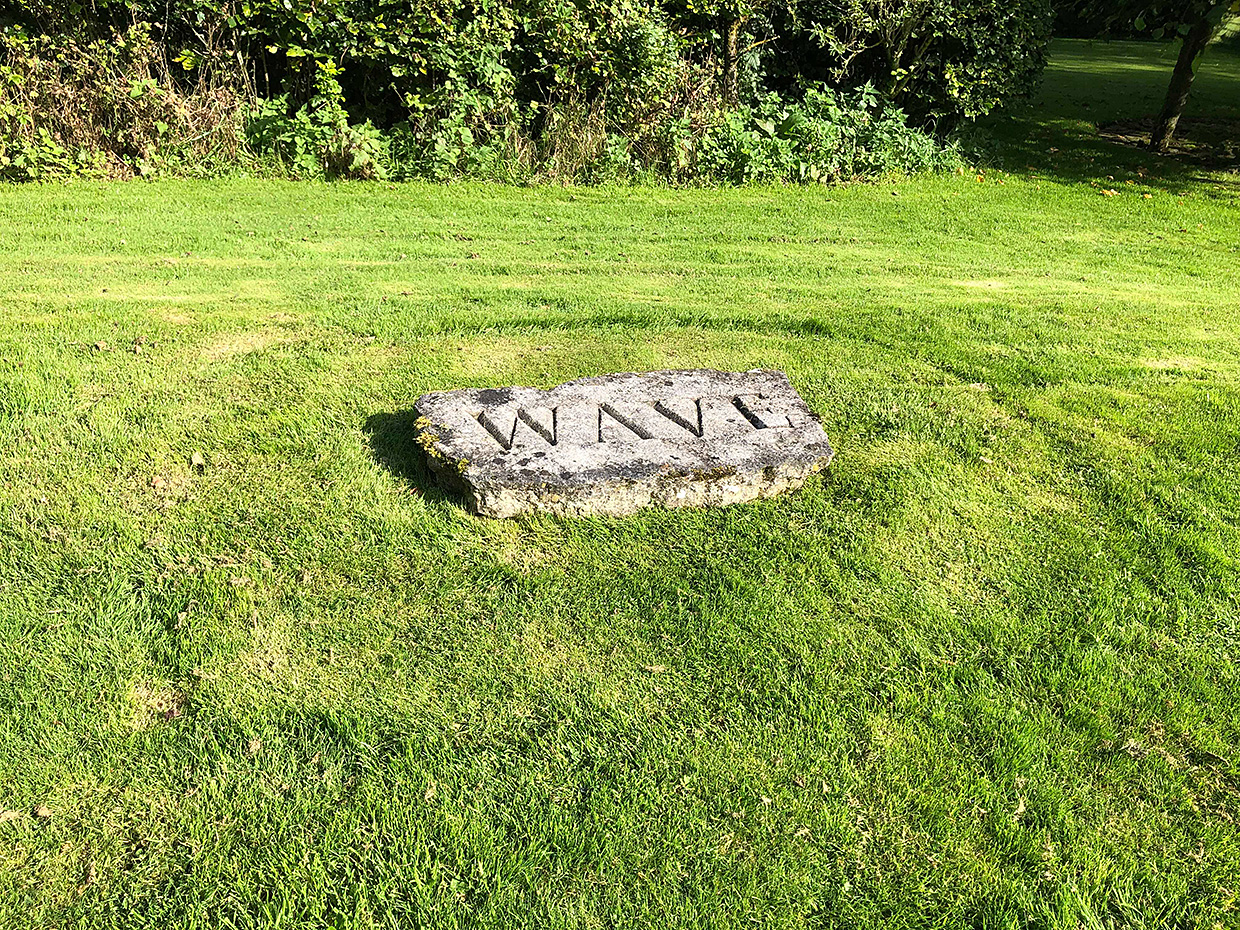
The garden Little Sparta,
created by the poet and artist Ian Hamilton Finlay
Reason for Nomination
By assembling newly unearthed events and facts that emerged in the process of her historical investigations, Sato sheds light on subjects related to people’s awareness and society that we are currently facing. For example, while dealing with The White Fox, an unfinished opera by Okakura Tenshin, Sato reexamined the role of the fox in Japanese legends, and by using historical relics, including the former Negishi Racetrack in Yokohama, as motifs, she illuminated aspects of contemporary society by describing a fictional redevelopment project. Sato’s pieces take the form of lecture-performances, which also incorporate video and objects, and tours in which she enables viewers to experience the work by guiding them to a given site. In addition to researching the history of performance art in Scotland, Sato will have an opportunity to explore the potential of multilingual lecture-performances. It is my expectation that Sato’s research in a different language and culture will further develop her use of creative translation and the way in which she constructs her works. (Director, Ozawa Keisuke)
Artist Statement
During my residency, I conducted research on two subjects. The first was narrative-based performance. Along with watching the practices of local artists, I also encountered the Performance Lecture Archive at LADA in London and learned about that history. At the Scottish Storytelling Centre in Edinburgh, I had the opportunity to hear folk stories and songs from locals.
The second subject was two gardens made by individuals: Sha Raku En, a Japanese garden that is said to be the largest in the West, was made by a Japanese woman in the 19th century; and Little Sparta, which was made by the poet Ian Hamilton Finlay at the end of his life. While these two gardens are private places created by individuals, they uniquely reflect the landscape of another land.
At the end of my residency, I reconfigured and presented my earlier lecture performance Shiro-Kitsune, A Hidden Song into a version for English speakers. Though the Japanese that formed an important element of the piece was left as it was, I attempted to share the language by adding translations and notes.
As someone who has developed a practice of solo storytelling in the form of lecture performances, this residency allowed me to reconsider what it means to tell a narrative in a way that goes beyond language as well as bringing me into contact with landscaping as a new methodology and further cultivating the outlook on my future work.
Emmie Mcluskey
Scotland
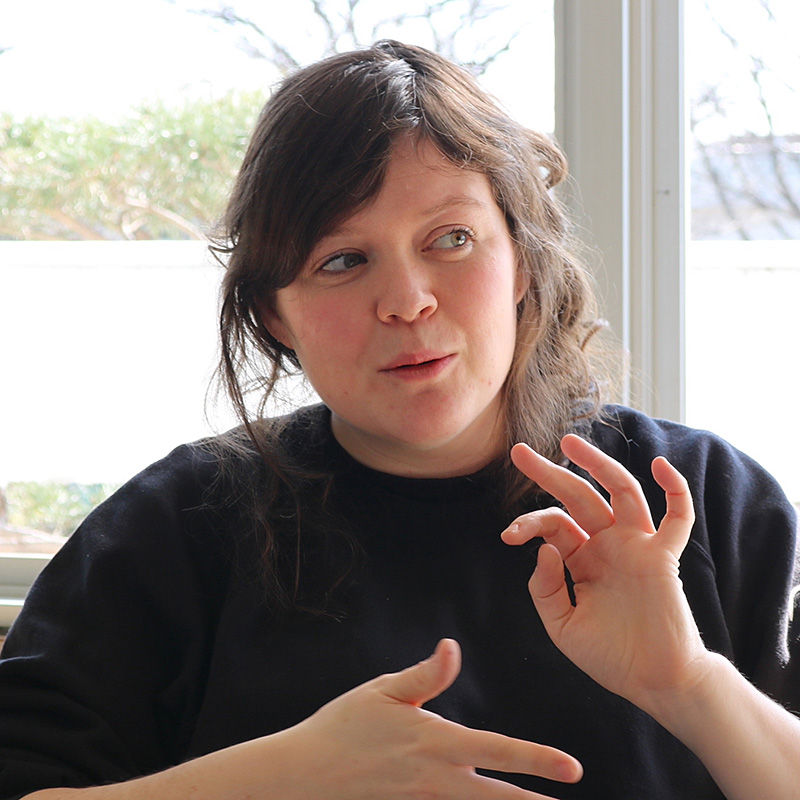
Collaboration is central to the work McLuskey produces, starting with a shared question or observation that she explores more deeply through practice. Recent work has centred around questions of interactions in and between bodies, considering the systems that control and record them. McLuskey works across the roles of artist, programmer, writer and educator. During her time at ARCUS Project, Ibaraki McLuskey will be researching a project titled Between Bodies, working with an English to Japanese translator and a local Aikido professional in order to build on previous interests around how we communicate and are understood by each other.
[Selected Exhibitions and Activities]
2019 Hanging Out Artists’ Moving Image Festival (participation as a programmer), LUX
Scotland/Tramway, Glasgow, UK
2019 these were the things that made the step familiar, Collective, Edinburgh, UK
2019 To: my future body with Janice Parker, KW Institute for Contemporary Art, Berlin, Germany
2019 A Strange American Funeral (publication edited with Freya Field-Donovan)
2019 Dogo Residenz für Neue Kunst, residency and exhibition, Lichtensteig, Switzerland
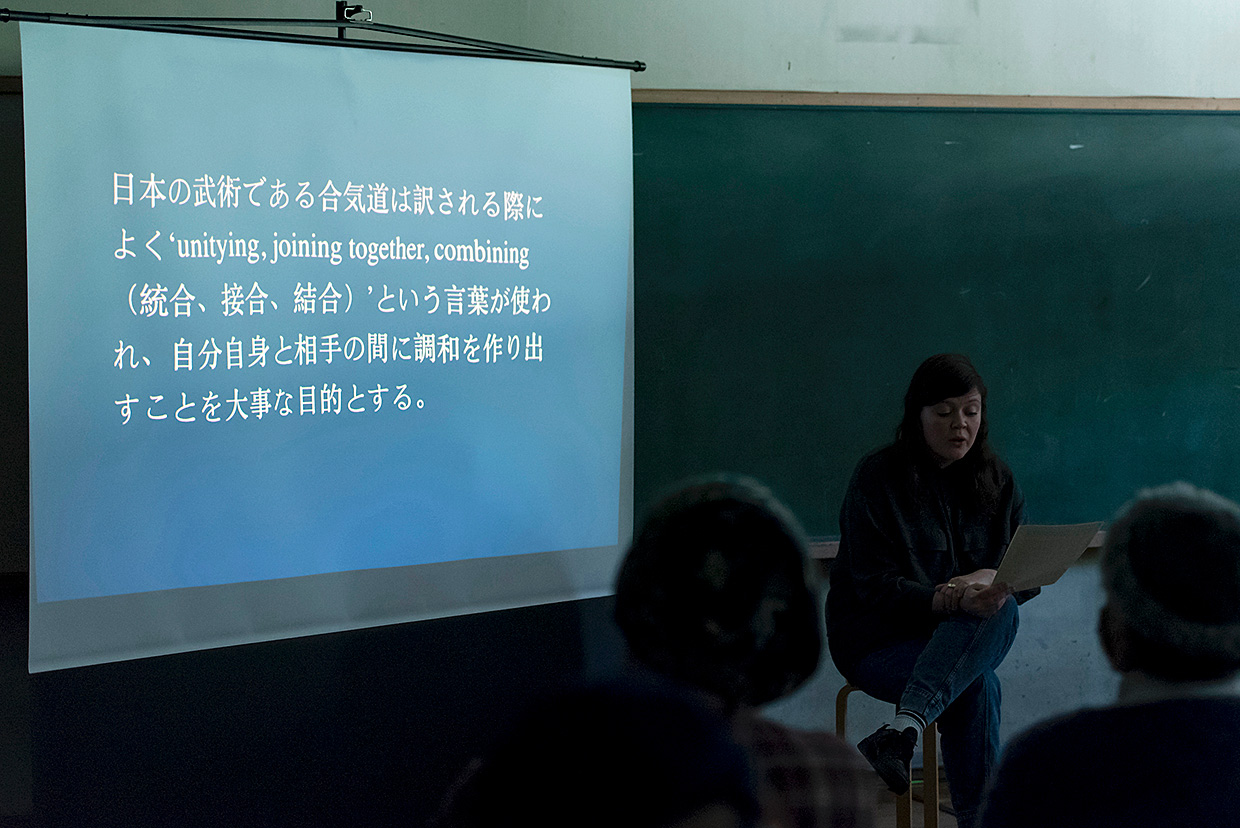
Reading Performance Organ
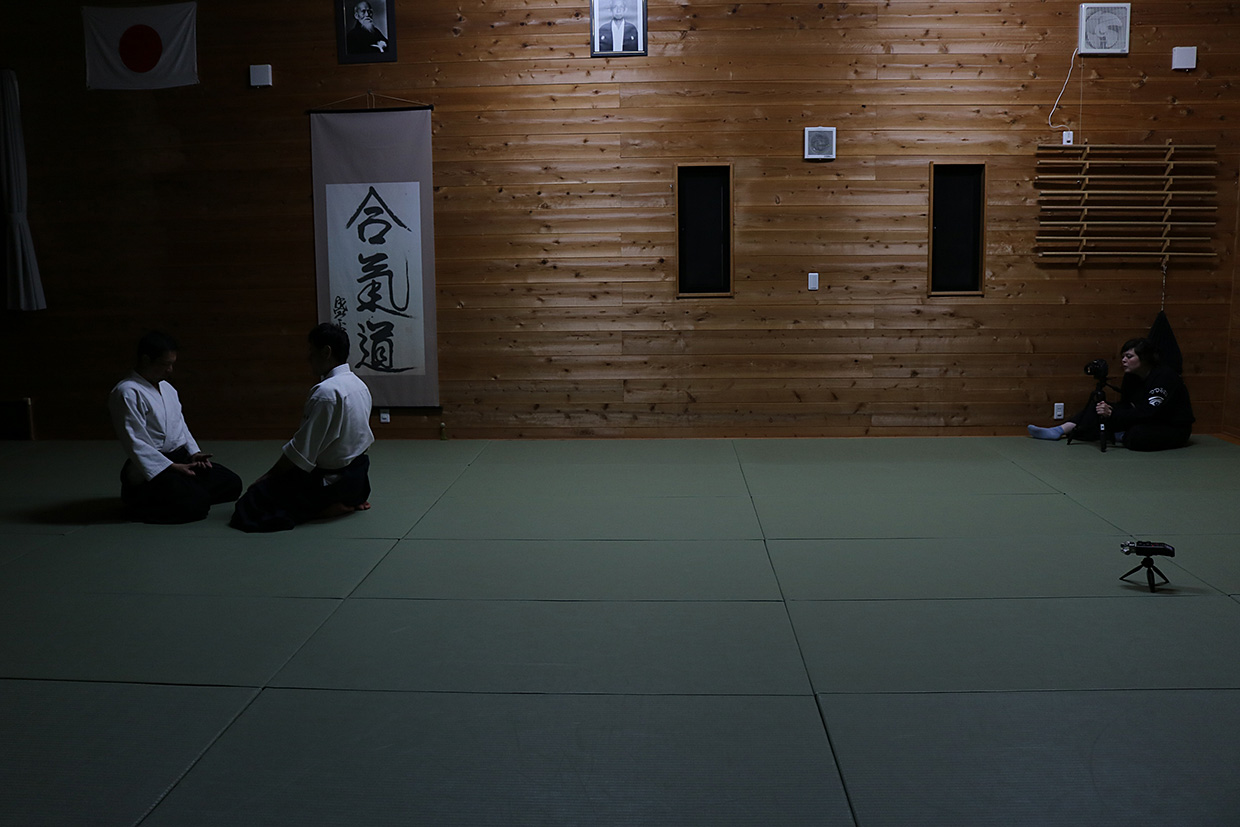
Filming at the Tsukuba Aikido-kai Moriya Suzuki Dojo
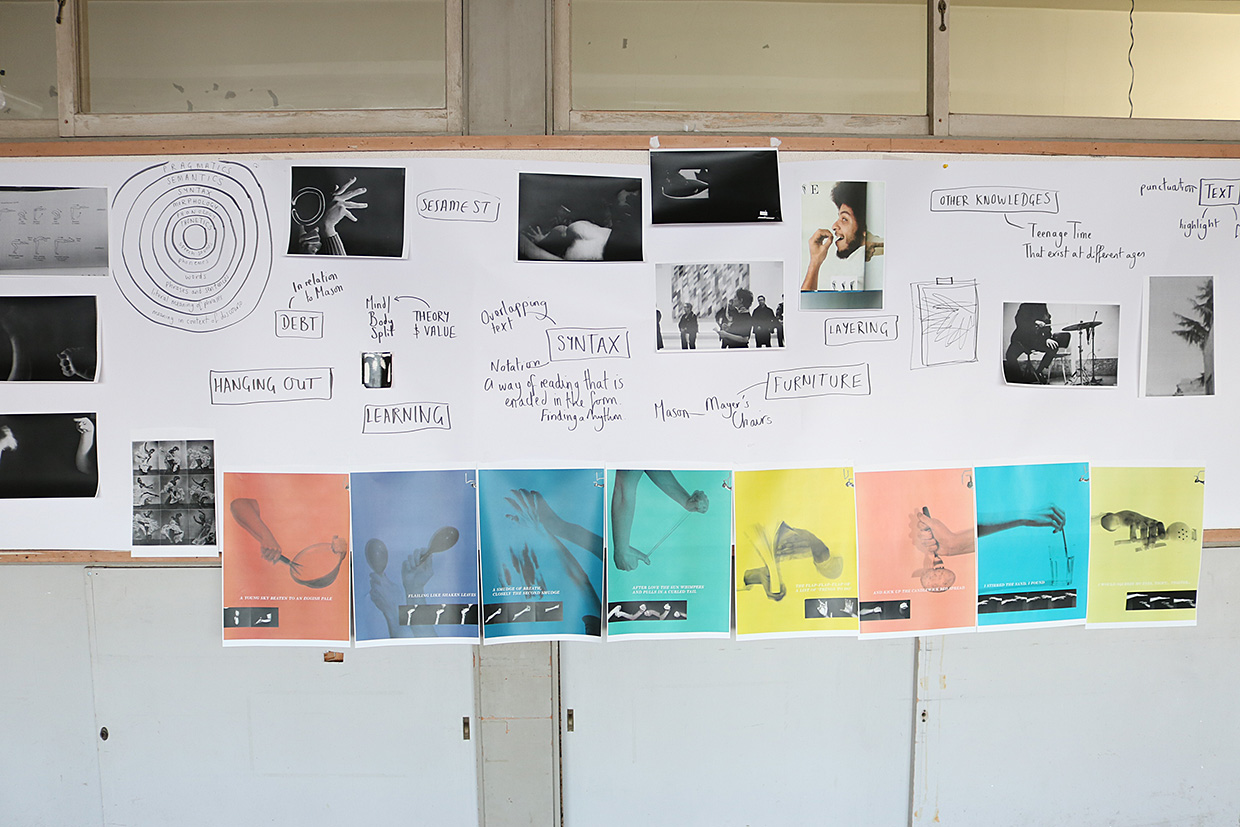
Studio
Reason for Selection
In her practice, Emmie McLuskey uses her own body as a medium to pursue the possibilities of communication through performance and its traces. In addition to exploring interaction in and between physical bodies as well as the relationship between the body and systems, she is not only an artist but also a programmer, writer, and educator. Believing these roles to be inseparable, her work visualizes the nature of the body through multiple perspectives and diverse media. In Japan, McLuskey will search for ways in which the body is used in the martial art of “Aikido”. Attempting to understand this subject not through her native language of English but in Japanese, her project aims to encounter new languages and knowledge while relativizing her own creative language and methodology. We accordingly selected her to support not only her own personal artistic activities but also what is an intriguing and adventurous endeavor in cultural exchange through art. Though a comparatively short residency of just one month, we look forward to seeing the results that McLuskey’s many discoveries and encounters will surely yield. (Ozawa Keisuke)
Artist Statement
During my time at ARCUS I have been working on new research towards a project titled Between Bodies which builds on previous work looking at how we communicate and are understood by each other.
Whilst in Japan over the last four weeks, I have been meeting with a local “Aikido” professional and teacher Yudai Suzuki, attending his advanced class twice weekly in order to observe, participate and record the movement of the students. I have learnt the fundamental movements and philosophy of “Aikido”, filming a wide variety of shots which will form the basis of my first piece of moving image work. I was also fortunate enough to visit the original dojo for “Aikido” in Iwama, recording the evening practice and meeting local “Aikido” professionals as well as those from across the world who go to study there. In the last week of my residency I was joined by filmmaker Thomas Ayre in order to capture Suzuki Sensei performing specific movements for camera under my direction.
During my time I also wrote a new piece of performance titled Organs, which was translated by Japanese artist and previous ARCUS resident, mamoru. My work with mamoru allowed me to deepen my understanding of Japanese culture through our shared research around the etymology and meaning of each word whilst also thinking through philosophies relating to aikido that aren’t so easy to translate into Western culture. In the third week of my residency I performed this text and took part in a residency report event. I believe our shared discussions around translation will continue to influence the work I make in the future, these conversations being integral to how and why I make.
Residency Report
Reports from Residencies in Scotland and Japan: The Dreams of Performers, Two Performances
Date and Time: February 22, 2020
Venue: ARCUS Studio
Speakers: Tomoko Sato, Emmie McLuskey
Moderator: Ozawa Keisuke
This event featured reports from the residency exchange with a special focus on performance as a practice.
In addition to sharing the results of their activities, Tomoko Sato and Emmie McLuskey each presented a performance. Through the practices of these two artists dealing with, respectively, language and what lies beyond language, the event delved into the nature of performance, a medium recently attracting attention in contemporary art.
